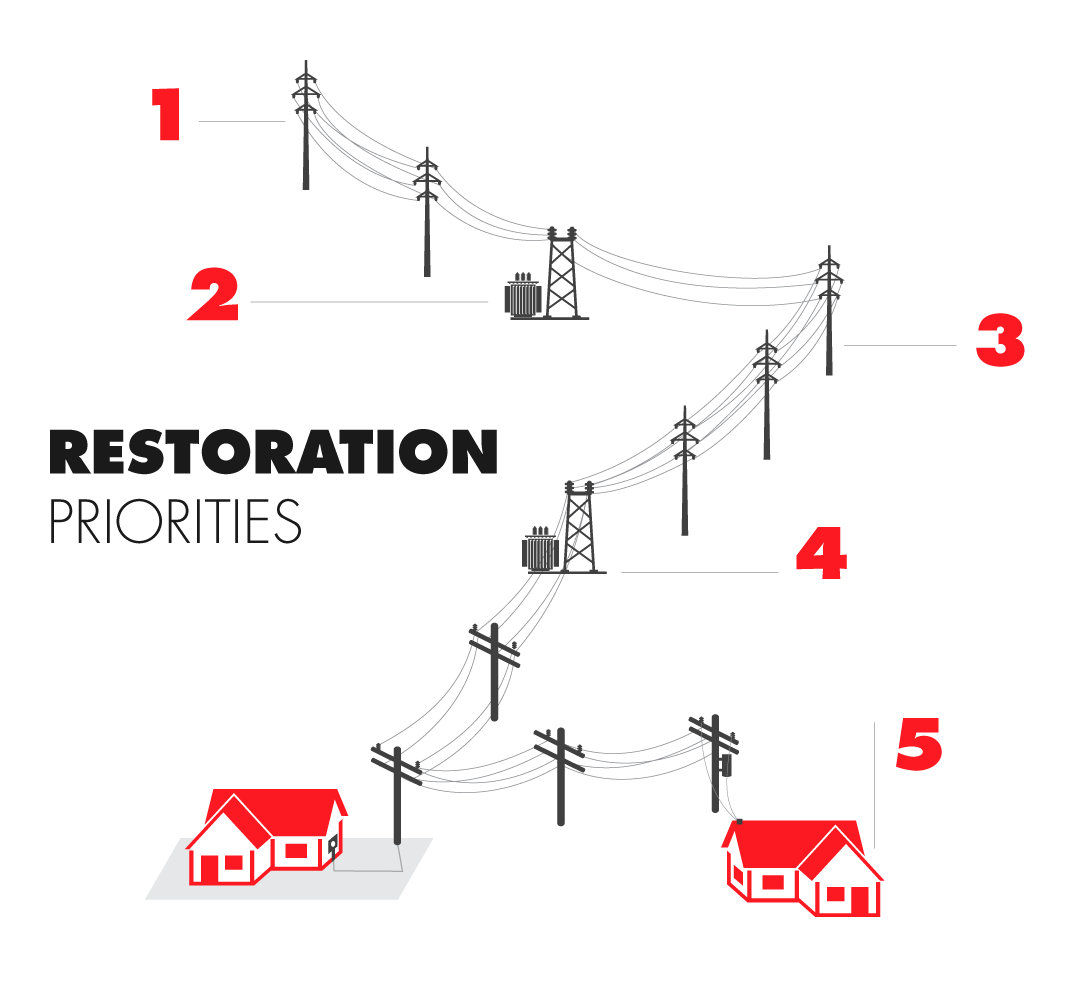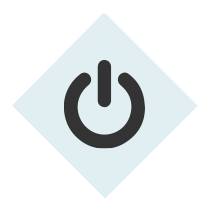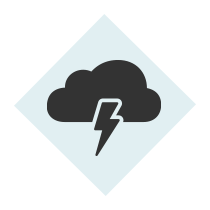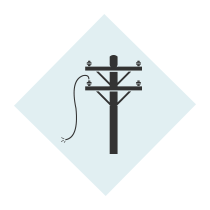Storm Restoration Updates
Severe Weather Update
Severe weather can strike without warning, threatening lives and property. We can’t prevent – or sometimes even predict – storms, but we have plans and preparations in place for when storms occur to keep you, our team and our community safe. Please check back on this page for essential severe weather information as we update throughout the day.
If you see a downed line, assume it's energized and do not approach it. For electric emergencies, like downed power lines, please call us at 1-800-799-4443.
If your power is out, please report it online and continue to monitor our outage map for updates. You can also sign up for outage updates via email or text alerts by logging into your My Account profile.
Power Restoration FAQs
How do you prioritize the repair work?
A: When responding to large-scale outages, we start with circuits that serve the most customers, including major transmission lines and large circuits (which sustained extensive damage), then to medium and smaller-capacity lines, and finally individual service lines. Throughout the restoration process we prioritize critical facilities, such as hospitals, shelters and water treatment plants.

1 – Repair transmission lines: After making sure generating plants are back up, we repair lines that transmit power from generating plants to your local area. Each repair can often restore power to thousands of our customers.
2 – Repair substations: Substations, which convert high-voltage power from big transmission lines to smaller distribution lines used by individual customers and businesses, usually serve several thousand of our customers.
3 – Repair distribution lines: Feeder lines leading from substations serve several hundred to more than 1,000 of our customers.
4 – Repair tap lines: Tap lines extend from feeder lines into your individual neighborhood. They generally serve 20 to a few hundred of our customers.
5 – Repair individual connections: This is the most difficult and time-consuming task, as our crews restore power to individual customers. Things that may need extra attention here include downed lines, broken poles and trees on lines.
Why doesn't the outage map show my outage/neighborhood?
A: As more outages are reported the map groups them together, so you may not be able to zoom in on your specific location on the map. The "updates" or "storm info" tabs along the top should have specific details.
My neighbors down the block are back on - but not us! Why?
A: If your power is off but a neighbor’s power is on, you might be on separate circuits.
What do I do if there is meter or service line damage?
A: If the service is pulled away from the house or there is damage to the meter box, you may need an electrician to make repairs prior to having your power restored. Find out what equipment is the property owner's responsibility to repair.
I keep seeing trucks drive by or a crew member sitting in his/her vehicle - what are they doing?
A: They may be assessing damage or looking for "quick fixes" to get power turned back on, or possibly watching live wires to ensure people stay away.
Who removes tree debris?
A: When clearing damaged limbs or removing trees after a storm, we make sure the area is electrically safe, but property owners are responsible for removing the debris after major storms. We recommend contacting your city or municipality for assistance.


